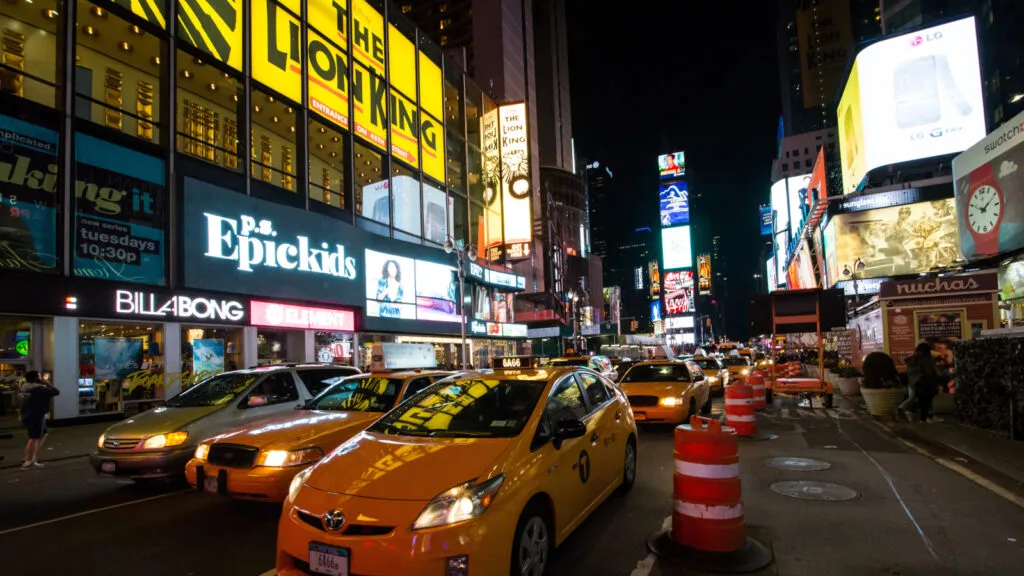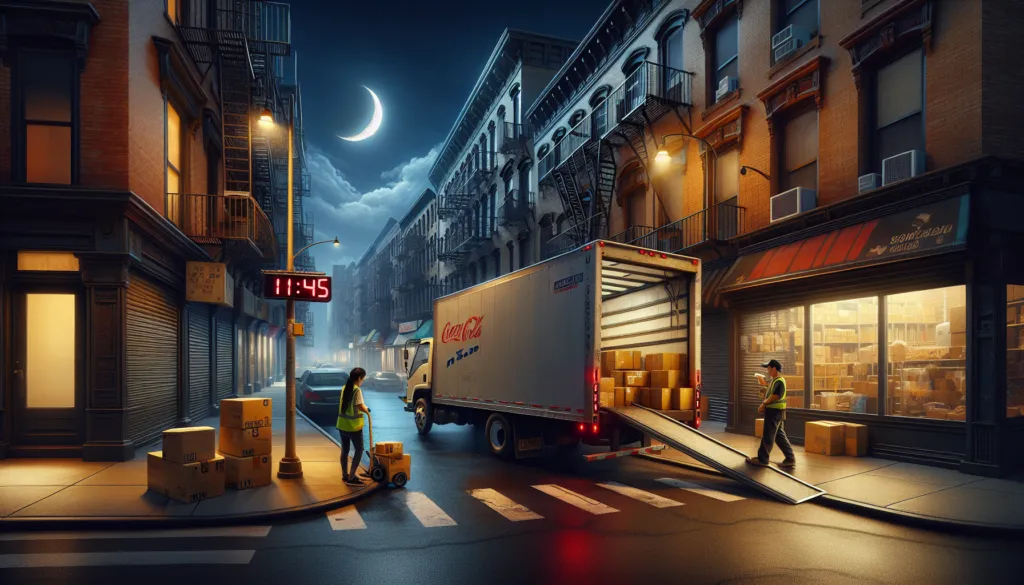
Get home early with RoadWarrior.
Enter your stops, optimize your routes, manage your team – quickly and efficiently.
Try RoadWarrior free for 7 days
Try free for 7 daysIn the time it takes to fly the 440 miles (708 kilometers) from New York to Charleston, S.C., drivers in cities like Washington D.C., can get all the way to work.
Commuters in urban areas can spend more than two hours a day in the car, much of that time just sitting in traffic. Highway congestion, especially in city centers, has gotten exponentially worse over the last 20 years, and it’s as bad for the economy and environment as it is for stress levels. In 2005, according to a study by the Texas Transportation Institute, it cost U.S. drivers $78 billion, including 2.9 billion gallons (10 million kiloliters) of wasted gasoline (and its corresponding air pollution) and 4.2 billion hours of lost time [source: FHWA]. It’s even more expensive for shipping businesses, leading to decreased profits and increased shipping rates.
Good solutions for congestion are hard to come by. Putting money into mass transit doesn’t always get enough cars off the road to make a difference. And expanding highways is so expensive — between $10 million and $15 million per mile, per lane — it can end up causing more problems than it solves [source: FHWA].
Enter congestion pricing, a type of toll system that uses principles of supply and demand to reduce traffic during peak travel hours. Basically, congestion pricing charges drivers more to use busy highways during rush hour, and less to use the same roads during off-peak times. It has already been implemented in cities like Singapore, London and San Diego, with some pretty impressive results.
In this article, we’ll find out how congestion pricing works and whether it really can help cut people’s commuting time. We’ll look at the various ways to implement the concept, check out what benefits it can provide, and see why some people still think it’s a bad idea.
First, implementation methods: There’s more than one way to use tolling to decrease drive times.
Congestion Pricing Basics
Most tolls on roadways are flat tolls — everyone pays the same price, no matter what time it is or how many people are in the car. The point of these tolls is simply to raise money. If the point of a toll is to reduce traffic, you need to take a different approach.
Congestion pricing, sometimes called value pricing, charges drivers based on road demand. The idea is if drivers have to pay more to use a particular stretch of road between, say, 7 a.m. and 8 a.m., they’ll only use it if they really have to. And since most drivers on the road during peak times are not actually driving to or from work, getting even a small portion of “discretionary traffic” out of the way can make a big dent in congestion rates — and, by extension, in greenhouse-gas emissions and commuter travel times [source: FHWA]. (Most tolls are collected electronically, using road sensors and car-based transponders, so drivers don’t even have to slow down to pay.)
The overall idea behind congestion pricing is the same across the board, but there are several different approaches to this type of tolling:
Variably Priced Lanes: During peak hours, cars are charged to use fast-moving lanes. San Diego has implemented this strategy in its I-15 HOT lanes. A high-occupancy vehicle can use the HOT lane for free, but a single-person vehicle has to pay a toll to use it.
Variably Priced Tolls: All cars have to pay the toll, but during peak hours the cost of the toll goes up. Two bridges in Fort Myers, Fla., use this approach, dropping the toll price just before and just after peak travel hours, resulting in a 20 percent reduction in traffic during rush hours [source: FHWA].
Zone-based Pricing: Cars have to pay to enter particular areas, typically business-concentrated city centers. Singapore has been using zone-based pricing since 1975.
Variable Area-wide Pricing: Per-mile charges on roadways increase during peak hours. Portland, Ore., which has been experimenting with per-mile road-use charges to replace gas taxes, has tested a variable-pricing system to reduce congestion.
The common thread between all of these methods, aside from trying to get unnecessary vehicles out of the way during peak hours, is that, somehow, they all seem to work pretty well.
The Tipping Point
It doesn’t take much to avoid congestion. For roadways, there’s typically a point of vehicle saturation; even a small number of cars above that point leads to drastic slowdown, and that slowdown can last for hours after the end of rush hour.
Does Congestion Pricing Help or Hurt?
For a government-implemented strategy, congestion pricing offers remarkably consistent positive results — at least according to its proponents. It seems to achieve its goals across the board, to varying degrees.
San Diego’s I-15 HOT lanes have resulted in significant increases in both bus ridership and carpooling, which reduces traffic and greenhouse-gas emissions. Congestion pricing on bridges and tunnels between New York and New Jersey ended up reducing peak-hour traffic between 4 and 7 percent [source: NCPA]. Rush-hour travel speeds in London’s city center have increased 37 percent, travel times have decreased 30 percent, and CO2 emissions have dropped 20 percent since congestion pricing was introduced [source: NCPA]. Similarly, Stockholm has seen a 10 to 14 percent drop in CO2 emissions in its city center, and Singapore’s zone-based program has reduced congestion by 45 percent [sources: FHWA, NCPA].
Despite the positive results, there are at least a couple of potential downsides to congestion pricing. The most unpopular aspect, of course, is the increased cost of tolls. Few people are happy about spending more money to get to work, and the expense can be particularly difficult for the working poor.
Some cities, though, are talking about using congestion pricing to avoid further gas-tax increases, and some might offer discounts to low-income commuters. And congestion-pricing proponents point out that since toll revenues are often put toward improvement in public transit, which is used more by low-income than by high-income commuters, the former can actually end up benefiting more from the setup.
The other, less concrete concern is the potential for privatization. Implementing congestion pricing on a grand scale will most likely involve private companies coming in to handle certain aspects like monitoring, billing and enforcement. Some people find the partial privatization of public roadways to be a cause for trepidation. Placing such a crucial piece of infrastructure in capitalist hands can be a harrowing proposition.
Resistance aside, congestion pricing is set to become a more familiar concept in the United States. The U.S. Department of Transportation has started offering special funding to cities looking to set up congestion pricing, including Seattle, Miami, San Francisco, Los Angeles, Minneapolis-St. Paul, and Chicago [source: EDF]. In the next 10 years, time-sensitive tolls could become as commonplace as HOV lanes.
For more information on congestion pricing and related topics, look over the links on the next page.
Radical Traffic Management
Congestion pricing is far from radical in the traffic-management realm. To reduce traffic-related air pollution in the lead up to the 2008 Beijing Olympics, China instituted an even-odd license place rule:Odd numbers and even numbers took turns on the road. In Holland, some roads have been stripped of all traffic signals and signs — in order to make them safer [source: Wired]. The idea is if roads feel more dangerous, people will pay closer attention.
Content written by Julia Layton and created in partnership with HowStuffWorks.com


